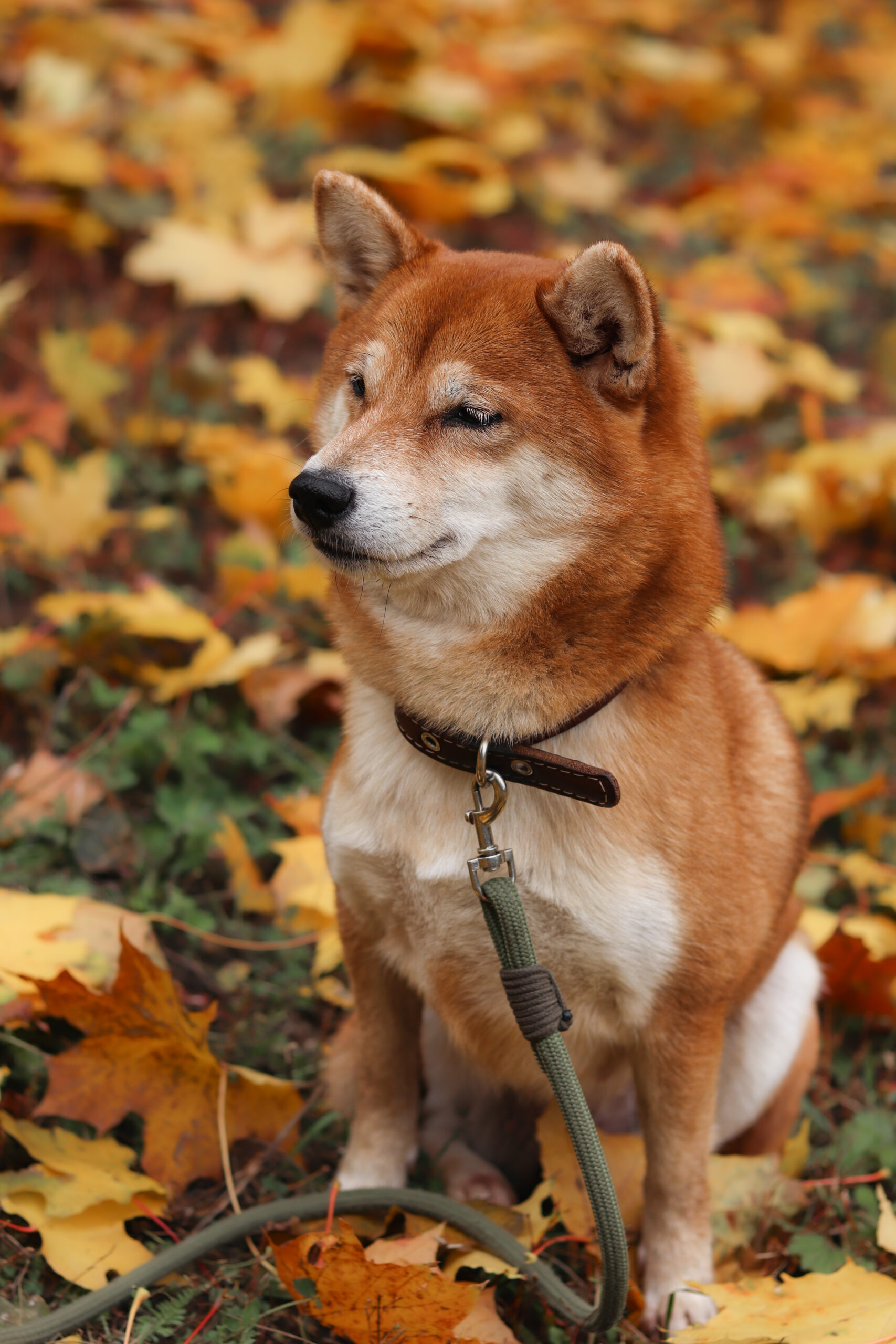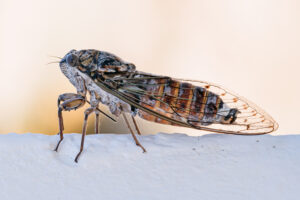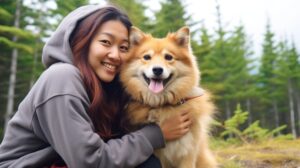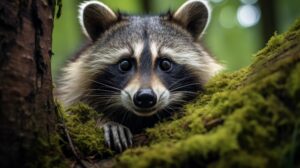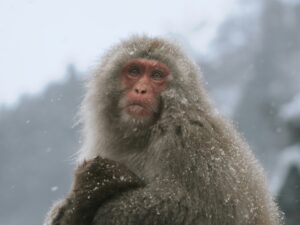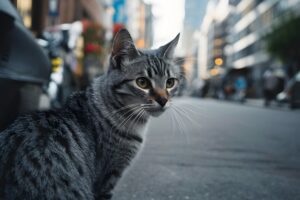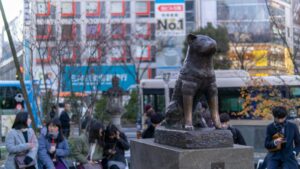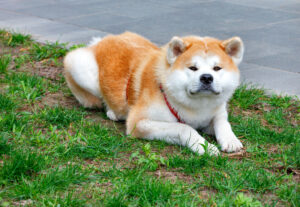The Shiba Inu, a breed revered for its spirited personality and fox-like appearance, has captured hearts across the globe. Originating from Japan, this small yet mighty dog exhibits a unique blend of independence and affection, making it a favorite among dog enthusiasts. With a history steeped in culture, a distinctive persona, and a growing international appeal, the Shiba Inu is more than just a pet; it’s a symbol of the enduring bond between humans and dogs. This article will delve into the various facets of the Shiba Inu, from its historical roots to its modern-day allure.
The Fascinating History of the Shiba Inu in Japan
The Shiba Inu’s history can be traced back over 2,000 years to ancient Japan, where it was originally bred for hunting small game such as birds and rabbits. Its name, "Shiba," translates to "brushwood," a reference to the breed’s purpose of navigating the dense undergrowth of Japanese landscapes. Throughout Japan’s feudal period, Shiba Inus were held in high regard, often accompanying samurai on expeditions.
However, the breed faced a significant decline by the mid-20th century due to the impact of World War II and the introduction of Western dog breeds. In an effort to preserve the Shiba Inu, dedicated breeders worked tirelessly to reconstruct the breed, focusing on reverting to its original features and temperament. The Japanese Shiba Inu Association was established in 1928, paving the way for the dog’s official recognition and preservation as a national treasure.
The post-war era saw a resurgence in the breed’s popularity, both in Japan and globally. By the late 20th century, Shiba Inus began to gain attention in the United States and other countries, largely due to their striking appearance and lively demeanor. Today, they are one of the most well-loved breeds worldwide, celebrated for their agility, intelligence, and endearing quirks that appeal to a diverse audience of dog enthusiasts.
Despite their popularity, Shiba Inus are still perceived as an emblem of Japanese culture, often featured in art, literature, and even folklore. Their history is intertwined with Japan’s cultural fabric, symbolizing fidelity and loyalty. The Shiba Inu’s journey from a hunting dog to a beloved companion highlights not only the breed’s resilience but also the deep connection it fosters with humans.
As the Shiba Inu continues to thrive in contemporary society, its history remains a source of deep pride for dog lovers and breeders alike. The breed serves as a bridge between Japan’s rich past and the modern world, embodying both tradition and evolution. Understanding the Shiba Inu’s historical significance enriches our appreciation for this remarkable dog.
In exploring the Shiba Inu’s history, one cannot overlook the challenges the breed has faced. The preservation efforts that have shaped today’s Shiba Inu reflect a broader conversation about breed conservation and the importance of responsible breeding practices. As we delve deeper into the characteristics that make the Shiba Inu unique, we uncover the traits that have endeared this breed to so many.
Characteristics That Make the Shiba Inu So Unique
The Shiba Inu is unmistakable, featuring a compact and muscular build that exudes confidence and agility. With a height ranging from 13.5 to 16.5 inches and weighing between 17 to 23 pounds, this breed is one of the smallest among Japan’s native dogs yet possesses a robust physique. The Shiba Inu’s double coat comes in various colors, including red, sesame (red with black-tipped hairs), black and tan, and cream, adding to its visual appeal.
One of the Shiba Inu’s standout features is its curled tail, which adds to its fox-like appearance. Coupled with erect ears and a keen, expressive face, the breed captures attention wherever it goes. The Shiba Inu’s overall aesthetic is not just about looks; it showcases the breed’s origins as a hunting companion, designed for agility and endurance.
Beyond physical attributes, the Shiba Inu possesses a remarkable level of intelligence. Ranked as one of the top ten most intelligent dog breeds, these dogs learn quickly and can excel in various activities, from obedience training to agility courses. Their sharp minds, however, can sometimes lead to stubbornness, requiring patient and consistent training methods.
The breed is also known for its cleanliness, often showing cat-like grooming habits. Shiba Inus are less prone to the “doggy smell” that can accompany many breeds, making them an appealing choice for individuals sensitive to odors. This characteristic, combined with their relatively low-shedding coat, makes them suitable for various living environments.
Additionally, the Shiba Inu has a strong prey drive, a trait stemming from its hunting background. This instinct can lead to a strong fascination with smaller animals, including cats and rodents. While this is a charming aspect of their personality, it also necessitates proper training and supervision, especially in multi-pet households.
In summary, the Shiba Inu’s unique characteristics—ranging from its physical appearance to its intelligence and cleanliness—make it a breed unlike any other. As we explore the Shiba Inu’s personality and interactions, we begin to understand how these traits translate into its captivating nature.
Understanding the Shiba Inu’s Distinctive Personality
The Shiba Inu is often described as spirited and confident, exhibiting a personality that can be both charming and challenging. Known for their independence, these dogs possess a unique blend of traits that can sometimes be perplexing to new owners. Their intelligence drives them to think for themselves, which can manifest as a stubborn streak during training.
Shiba Inus are also known for their strong-willed nature. While they are affectionate with their families, they may take time to warm up to strangers. This breed often bonds closely with their human companions but can display a reserved demeanor around unfamiliar people. This trait makes them excellent watchdogs, quick to alert their owners to any potential intruders.
Another key aspect of the Shiba Inu’s personality is its playfulness. These dogs are highly energetic and enjoy engaging in various activities, from interactive play sessions to adventurous walks. Their playful nature not only keeps them physically active but also stimulates their mental faculties, preventing boredom and destructive behavior.
Despite their independent streak, Shiba Inus are known to be incredibly loyal to their families. They form strong bonds with their owners and thrive on companionship, often following them around the house. This loyalty can sometimes lead to separation anxiety, so it is essential for owners to provide proper training and socialization from a young age.
Additionally, Shiba Inus have a unique way of communicating. Their vocalizations, which can range from the well-known "Shiba scream" to a variety of barks and howls, express their emotions and desires. Understanding these vocal cues is essential for forging a deeper connection with the breed.
In conclusion, the Shiba Inu’s distinctive personality is a combination of independence, loyalty, and playfulness. As we delve into their cultural significance and history, we see how these traits make the breed a cherished companion and a symbol of loyalty in Japanese culture.
The Shiba Inu’s Role in Japanese Culture and Folklore
In Japan, the Shiba Inu holds a prominent place in culture, representing not just companionship but also values such as loyalty and courage. The breed’s historical significance dates back centuries, intertwining it with Japan’s agricultural and hunting traditions. Often depicted in traditional art, the Shiba Inu symbolizes the spirit of perseverance that characterizes the Japanese ethos.
One of the most famous stories involving a Shiba Inu is that of Hachiko, an Akita, who is often misidentified as a Shiba Inu due to their similar appearance. Hachiko’s tale of unwavering loyalty, waiting for his deceased owner at a train station for nearly a decade, has made him an enduring symbol of fidelity in Japan. Statues and memorials dedicated to Hachiko can be found throughout the country, highlighting the deep respect and admiration for dogs in Japanese society.
In folklore, the Shiba Inu has been featured in many tales that emphasize its bravery and loyalty. These stories often depict the breed as an honorable companion to samurai, further embedding the Shiba Inu into the cultural fabric of Japan. Such narratives not only celebrate the dog’s qualities but also showcase the bond between humans and their canine counterparts throughout history.
The Shiba Inu’s popularity in Japan has also led to various media representations. From animated films to television shows, the breed has captured the imagination of audiences, further solidifying its status as a cultural icon. Its portrayal often emphasizes its spirited personality and endearing quirks, resonating with people of all ages.
Japanese festivals and events often feature the Shiba Inu as a prominent element, where they are celebrated for their beauty and charm. Annual dog shows and competitions showcase the breed’s agility and intelligence, attracting enthusiasts and spectators eager to witness their remarkable skills and grace.
Overall, the Shiba Inu’s role in Japanese culture and folklore is multifaceted, serving as a symbol of loyalty, bravery, and companionship. As we explore the care and training necessary for these dogs, we will better understand how to honor their rich heritage while fostering a loving environment for them in modern times.
How to Care for Your Shiba Inu: Essential Tips
Caring for a Shiba Inu requires a balanced approach that addresses their physical, mental, and emotional needs. As an active breed, Shiba Inus thrive on regular exercise, necessitating at least an hour of physical activity each day. This can include walks, playtime in a secure yard, or engaging in dog sports like agility or flyball. Adequate exercise not only keeps them fit but also helps mitigate behavioral issues that may arise from pent-up energy.
Nutrition is another critical aspect of Shiba Inu care. A well-balanced diet consisting of high-quality dog food tailored to their age, size, and activity level is essential. Since Shiba Inus are prone to obesity, portion control is crucial, along with regular monitoring of their weight. Consulting with a veterinarian can help determine the best feeding routine and dietary needs for your dog.
Grooming is also important for the Shiba Inu’s upkeep. Their double coat requires regular brushing, especially during shedding seasons, to minimize loose fur around the house. Bathing should be done as needed, typically every few months or when they become particularly dirty. Regular grooming not only keeps the coat healthy but also provides an opportunity to check for any skin irritations or parasites.
Socialization is a vital component of a Shiba Inu’s upbringing. Exposing them to various environments, people, and other animals at a young age helps them develop into well-rounded adults. This breed can be somewhat reserved or aloof, so positive interactions with different experiences will foster confidence and reduce fearfulness in unfamiliar situations.
Mental stimulation is equally important for Shiba Inus. Their intelligence makes them eager learners, so incorporating puzzle toys, obedience training, and interactive games into their daily routine can keep their minds sharp. Engaging them in training sessions not only reinforces good behavior but also strengthens the bond between dog and owner.
Finally, regular veterinary check-ups are essential for monitoring your Shiba Inu’s health throughout their life. Vaccinations, dental care, and preventive treatments for parasites are all necessary steps in maintaining their well-being. Developing a strong relationship with a veterinarian can help address any health concerns promptly and ensure a long, healthy life for your beloved companion.
In summary, caring for a Shiba Inu involves a comprehensive approach that prioritizes exercise, nutrition, grooming, socialization, mental stimulation, and regular veterinary visits. As we transition to discussing training techniques, we will explore how these elements contribute to raising a well-adjusted Shiba Inu.
Training Techniques for a Well-Behaved Shiba Inu
Training a Shiba Inu can be a rewarding yet challenging endeavor, given the breed’s stubbornness and strong-willed nature. Establishing a consistent routine from an early age is crucial for effective training. Positive reinforcement techniques, such as treats, praise, and toys, are particularly effective in encouraging desired behaviors. Shiba Inus respond well to rewards, making training sessions more enjoyable for both the owner and the dog.
One important aspect of training is teaching basic obedience commands. Start with commands like "sit," "stay," and "come," gradually progressing to more complex commands as your dog masters the basics. Short, frequent training sessions—lasting around 5-10 minutes—are ideal, as Shiba Inus can become bored or distracted during prolonged sessions. Consistency and repetition are key in reinforcing learned behaviors.
Socialization is another critical component of training that helps prevent potential behavior issues. Ensuring your Shiba Inu is exposed to various environments, people, and other animals at a young age promotes confidence and adaptability. Puppy classes or socialization groups can provide excellent opportunities for your dog to interact with others in a controlled environment.
Leash training is also essential, as Shiba Inus can be prone to pulling and strong prey drives. Using a front-clip harness can help manage pulling while also providing a comfortable fit for walks. Teaching loose-leash walking techniques, using treats as motivation, allows your Shiba Inu to enjoy their walks while maintaining control.
Addressing any unwanted behaviors promptly is vital for successful training. Shiba Inus can develop habits such as barking or digging if left unchecked. Identifying the cause of such behaviors—whether boredom, stress, or lack of exercise—and addressing them through redirection or increased physical activity is essential in preventing escalation.
Lastly, patience is key when training a Shiba Inu. Their independent nature means they may not always comply immediately, and expecting perfection can lead to frustration. A calm and consistent approach, combined with plenty of encouragement, will yield the best results in shaping a well-behaved companion.
In conclusion, effective training techniques for Shiba Inus focus on consistency, positive reinforcement, and environmental familiarity. As we explore health considerations specific to this breed, we will further enhance our understanding of how to support their well-being throughout their lives.
Health Considerations for the Shiba Inu Breed
Like all breeds, Shiba Inus are prone to certain health issues that prospective owners should be aware of. One common concern is hip dysplasia, a genetic condition that affects the hip joint, leading to discomfort and mobility issues. Regular veterinary check-ups and maintaining a healthy weight can help manage the risk of hip dysplasia and other joint-related problems.
Another health consideration is patellar luxation, a condition where the kneecap dislocates or moves out of its normal position. This is particularly prevalent in smaller breeds, including Shiba Inus. Symptoms may include limping or an abnormal gait, and if left untreated, it can lead to chronic pain. Regular vet visits can help detect this condition early on.
Shiba Inus are also predisposed to eye issues, such as cataracts and progressive retinal atrophy (PRA), which can affect their vision over time. Annual eye examinations by a veterinarian can help identify any changes in vision early, increasing the chances of successful treatment if necessary.
Skin allergies are another concern for Shiba Inus, leading to itching, redness, and discomfort. Identifying and eliminating allergens—whether environmental or dietary—is crucial in managing skin sensitivities. Regular grooming and bathing can also help maintain skin health and reduce irritation.
The breed’s average lifespan is around 12 to 15 years, making it essential for owners to prioritize preventive care throughout their dog’s life. This includes vaccinations, dental care, and regular exercise. A proactive approach to health care not only extends a Shiba Inu’s life but also enhances its quality of life.
In summary, understanding health considerations specific to the Shiba Inu breed is vital for ensuring their well-being. As we move forward to discussing the Shiba Inu’s global popularity, we will see how these health aspects contribute to the breed’s reputation among dog lovers.
The Shiba Inu’s Popularity: A Global Phenomenon
The Shiba Inu’s rise to global popularity is a remarkable story that reflects changing attitudes toward dog ownership and the breed’s undeniable charm. Initially admired for its hunting skills and loyalty in Japan, the breed found its way into the hearts of dog enthusiasts worldwide. The advent of social media has played a significant role in this phenomenon, allowing Shiba Inu owners to showcase their dogs in a way that resonates with a broader audience.
In recent years, Shiba Inus have become social media darlings, often seen in viral videos and memes. Their distinct expressions, playful antics, and unique vocalizations lend themselves well to shareable content, capturing the attention of dog lovers and casual viewers alike. This newfound fame has subsequently led to increased interest in the breed, with many seeking to welcome a Shiba Inu into their homes.
Dog shows and competitions have also contributed to the Shiba Inu’s popularity. As more people become aware of the breed’s unique characteristics and capabilities, interest in adopting them as companions has surged. The breed’s agility and intelligence have made them a favorite among dog enthusiasts, resulting in Shiba Inu participation in various events and competitions worldwide.
Moreover, Shiba Inus are often seen as a status symbol, particularly in urban environments, where their small size and striking appearance make them ideal companions for city dwellers. Their adaptability to apartment living, combined with their independent nature, appeals to those with busy lifestyles.
The Shiba Inu’s popularity has also spurred a demand for responsible breeding practices. As awareness grows regarding ethical breeding, prospective owners are becoming more discerning about where they acquire their pets. This shift toward responsible breeding is crucial for the long-term sustainability of the breed and helps mitigate health issues associated with poor breeding practices.
In conclusion, the global phenomenon of Shiba Inu popularity illustrates the breed’s widespread appeal, fueled by social media, events, and changing lifestyles. As we explore common misconceptions about Shiba Inu ownership, we will further understand how to appreciate and care for this beloved breed.
Common Misconceptions About Shiba Inu Ownership
Despite their popularity, several misconceptions about Shiba Inu ownership persist. One prevalent myth is that Shiba Inus are hypoallergenic. While their grooming habits might minimize odors, they are not hypoallergenic dogs. Shiba Inus still shed and can cause allergic reactions in sensitive individuals, making it essential for potential owners to consider this factor before adoption.
Another misconception is that Shiba Inus are entirely independent and do not require much interaction or training. While they are known for their strong-willed nature, Shiba Inus thrive on socialization and mental stimulation. Consistent training and companionship are crucial for their development, and leaving them alone for extended periods can lead to behavioral issues.
Additionally, some people believe that Shiba Inus are aggressive or unfriendly. While they can be cautious around strangers, this behavior is often a result of their protective instincts. With proper socialization and training, Shiba Inus can be friendly and well-mannered companions. Owners should not expect them to be overly affectionate with everyone they meet, but rather nurture their loyalty toward family members.
Another misconception is that all Shiba Inus are difficult to train. While they can present challenges due to their independent nature, the right training techniques can lead to positive outcomes. The key is to be patient, consistent, and use positive reinforcement methods to encourage desired behaviors. With the right approach, Shiba Inus can learn a variety of commands and tricks.
Finally, some people mistakenly believe that Shiba Inus do not need much exercise due to their small size. In reality, these dogs are energetic and require regular physical activity to stay healthy and happy. Daily walks, playtime, and mental stimulation are essential to prevent boredom and destructive behavior.
In summary, understanding and dispelling common misconceptions about Shiba Inu ownership is crucial for prospective owners. As we transition to discussing best practices for socializing your Shiba Inu, we will emphasize the importance of proper training and care for this extraordinary breed.
Socializing Your Shiba Inu: Best Practices Explained
Socializing a Shiba Inu is a vital component of their development and overall behavior. Proper socialization helps them become well-adjusted adults, reducing the likelihood of fear-based reactions to
